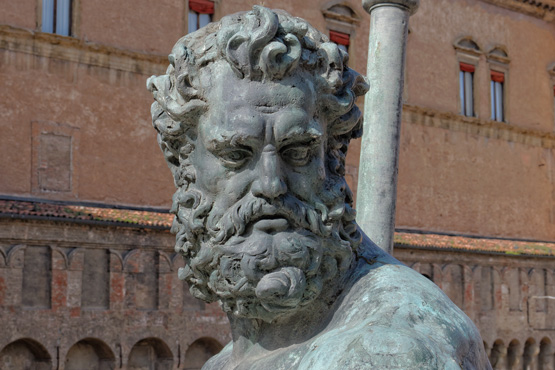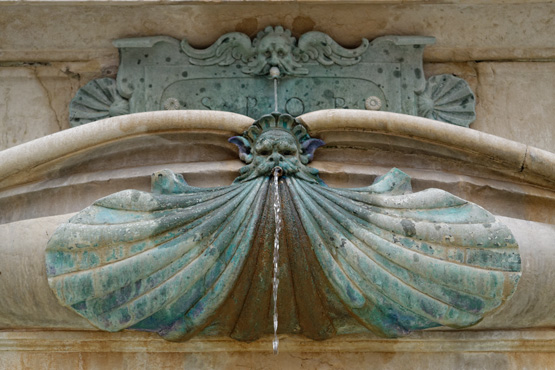Forms of alteration and decay
The Fountain of Neptune presents forms of decay typical of monuments exposed to atmospheric agents in an urban environment and of fountains, where different materials interact with water and its chemical properties. These alterations are compounded by man’s actions and damage caused by pigeons. In addition, signs of previous restorations and repair work are evident all over the monument and range from dowels and patches on the metal to the replacement of entire stone elements.
Bronzes
The statue of the god Neptune has a dark surface due to a layer of black probably applied for protection during the restoration undertaken by Bruno Bearzi in 1946. All the surfaces of the Neptune statue and the other bronze sculptures and reliefs present sediments and colour alterations ranging from green to light blue, white-green, black, and deep purple caused by exposure to the urban atmosphere and rain as well as by the chlorine-disinfected water that courses through the jets into the fountain basins corroding the copper alloy. The partial evaporation of the recirculating water favours the build up of thick limescale deposits. Lastly, while fractures and other damage have been documented, the true scale of deterioration can only be evaluated following removal of sedimented dirt and the products of corrosion.

Stone materials

The stone structure of the monument is made up of two types of limestone: Verona red marble and Istria stone, with additions and replacements during previous interventions. The Istria stone and Verona red marble of the Fountain’s “water castle” and basin have been severely eroded by recirculating chlorinated water, and show the typical deterioration caused to outdoor monuments by atmospheric agents as well as the effects of human intervention.
All the stone parts of the monument present disfiguring lime encrustations of variable thickness. The Verona red marble is affected by a different form of decay involving a loss of the matrix around the clasts.
 English
English Italian
Italian